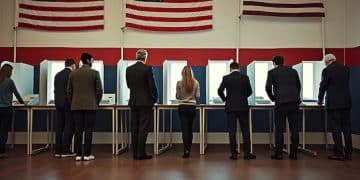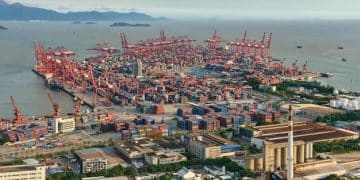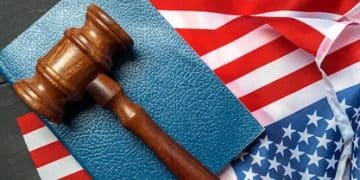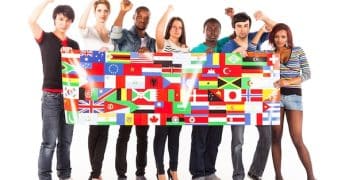Balancing Act: US Economic Interests vs. Diplomatic Goals
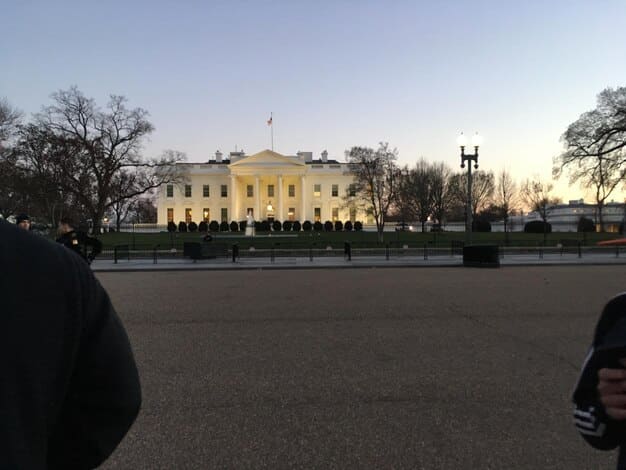
The US balances its economic interests in foreign policy by leveraging trade agreements and financial influence, while simultaneously pursuing diplomatic objectives such as fostering international stability and promoting human rights, often requiring careful negotiation and strategic compromises.
Navigating the complexities of international relations requires a delicate balance. The question of how is the US balancing economic interests with diplomatic objectives in its foreign policy? is central to understanding America’s role in the world.
The Intertwined Nature of Economics and Diplomacy
Economic interests and diplomatic objectives are not mutually exclusive; rather, they are often deeply intertwined in the formulation and execution of US foreign policy. This intersection creates both opportunities and challenges for policymakers.
The United States wields significant economic power, which it can leverage to advance its diplomatic goals. Conversely, strong diplomatic relationships can pave the way for enhanced economic cooperation and trade.
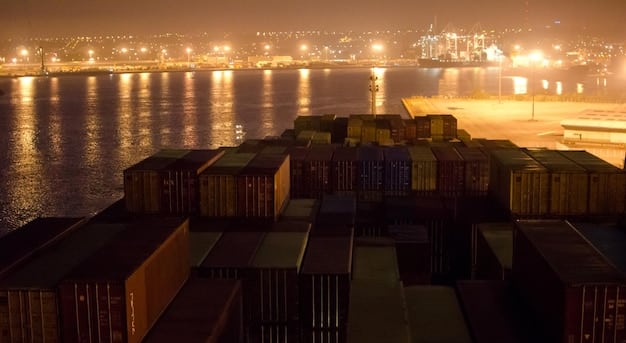
Economic Leverage in Diplomacy
How does the US use its economic strength to influence other nations? One common method is through trade agreements.
- Trade Agreements: These agreements can be used to incentivize countries to adopt certain policies or standards.
- Sanctions: Economic sanctions are a powerful tool to penalize nations for actions the US deems unacceptable.
- Financial Aid: Providing financial assistance can foster goodwill and promote stability in developing nations.
However, the use of economic leverage can be controversial. Accusations of neo-colonialism and unfair trade practices are sometimes leveled against the US.
Historical Context: Balancing Act Through the Years
The balancing act between economic interests and diplomatic objectives has evolved throughout US history. Different eras have presented unique challenges and priorities.
From the early days of isolationism to the post-World War II era of global leadership, the US has continuously adjusted its approach to foreign policy. Understanding this historical context is crucial.
Early American Foreign Policy
In the early years of the republic, the US prioritized economic growth and territorial expansion, often at the expense of diplomatic relations with Native American tribes and European powers.
As the nation grew, its economic interests became more intertwined with the rest of the world, necessitating a more active role in international affairs. However, the core principle of protecting American economic interests remained constant.
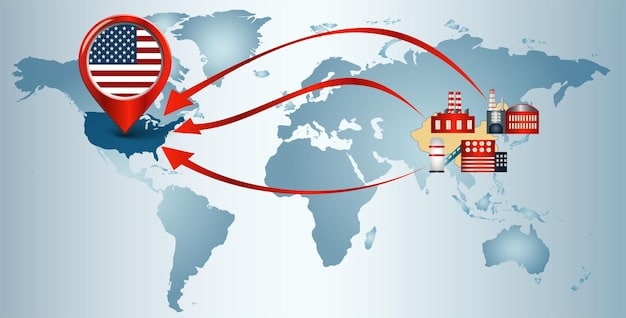
Contemporary Challenges: Navigating a Complex World
Today, the US faces a complex array of challenges in balancing its economic interests and diplomatic objectives. The rise of new economic powers, climate change, and global security threats all demand careful consideration.
Successfully navigating these challenges will require a nuanced approach that takes into account both the economic and diplomatic implications of every decision.
Rising Economic Powers
The rise of China and other emerging economies has altered the global landscape. These nations pose both economic competition and potential diplomatic challenges.
- Trade Imbalances: Addressing trade imbalances with China and other nations is a key economic priority for the US.
- Geopolitical Rivalry: Economic competition can sometimes spill over into geopolitical rivalry, requiring careful diplomatic management.
- Investment and Infrastructure: Balancing investments in domestic infrastructure with engagement in global development projects.
The US must find ways to cooperate with these rising powers while also safeguarding its own economic interests and promoting its values.
The Role of International Institutions
International institutions such as the United Nations, the World Trade Organization, and the International Monetary Fund play a crucial role in facilitating cooperation and resolving disputes. These institutions can help the US to balance its economic interests and diplomatic objectives.
However, the US also faces challenges within these institutions, as other nations may have different priorities and agendas.
Benefits of Multilateralism
Engaging in multilateral diplomacy through international institutions can provide numerous benefits.
- Shared Burdens: International institutions allow nations to share the burdens of addressing global challenges.
- Legitimacy: Actions taken through international institutions are often seen as more legitimate than unilateral actions.
- Conflict Resolution: International institutions provide mechanisms for resolving disputes peacefully.
The US must strike a balance between asserting its leadership within these institutions and respecting the sovereignty of other nations.
Human Rights vs. Economic Pragmatism
One of the most difficult challenges in US foreign policy is balancing the promotion of human rights with the pursuit of economic interests. Sometimes, these two goals may conflict.
For example, the US may face pressure to impose sanctions on a country for human rights abuses, even if that country is an important trading partner.
Strategies for Balancing Values and Interests
Finding the right balance requires careful consideration of the specific circumstances and a willingness to engage in dialogue and negotiation.
- Conditional Engagement: The US can condition its economic engagement on improvements in human rights.
- Targeted Sanctions: Instead of imposing broad sanctions that harm the entire economy, the US can target specific individuals or entities responsible for human rights abuses.
- Diplomatic Pressure: Publicly condemning human rights abuses and engaging in private diplomacy can also be effective.
Ultimately, the US must strive to find ways to promote its values without undermining its economic interests.
Future Directions: Sustainable and Inclusive Growth
Looking ahead, US foreign policy must focus on promoting sustainable and inclusive economic growth. This means supporting policies that protect the environment, reduce inequality, and promote opportunity for all.
By aligning its economic interests with its diplomatic objectives, the US can create a more prosperous and just world.
Investing in Long-Term Stability
Sustainable and inclusive growth is essential for long-term stability. When people have access to economic opportunity and a healthy environment, they are less likely to resort to conflict and extremism.
The US must invest in programs that promote education, healthcare, and infrastructure development in developing countries. This will not only benefit those countries but also create new markets for American goods and services.
Moreover, the US should work to reduce trade barriers and promote fair competition. By creating a level playing field, the US can ensure that all nations have the opportunity to prosper.
| Key Point | Brief Description |
|---|---|
| 🤝 Diplomacy & Economy | US foreign policy intertwines economic interests and diplomatic goals. |
| 📈 Economic Leverage | Trade agreements and sanctions are tools to influence other nations. |
| 🌍 Global Challenges | Rise of new powers and climate change impact policy balance. |
| ⚖️ Human Rights | Balancing human rights promotion with economic pragmatism is critical. |
FAQ Section
▼
The US employs various tools, including trade agreements to incentivize policy changes, economic sanctions to penalize unacceptable behavior, and financial aid to foster goodwill and stability in developing nations.
▼
The rise of China presents both economic competition and diplomatic challenges. It requires the US to manage trade imbalances, navigate geopolitical rivalry, and balance investments in domestic infrastructure with global development projects.
▼
Institutions like the UN, WTO, and IMF facilitate cooperation and resolve disputes. They allow the US to share burdens, legitimize actions, and resolve conflicts peacefully, though challenges arise from differing national priorities.
▼
The US uses conditional engagement to incentivize human rights improvements, implements targeted sanctions against abusers, and applies diplomatic pressure through public condemnation and private dialogue to balance its values and economic interests.
▼
US foreign policy should focus on promoting sustainable and inclusive economic growth by supporting policies that protect the environment, reduce inequality, and create opportunities, aligning economic interests with diplomatic objectives for a more prosperous and just world.
Conclusion
In conclusion, the United States’ approach to foreign policy necessitates a continuous and adaptive balancing act between its economic interests and diplomatic objectives. This involves leveraging economic tools strategically, navigating complex global challenges, and striving to align its values with its interests for a more stable and prosperous world.
